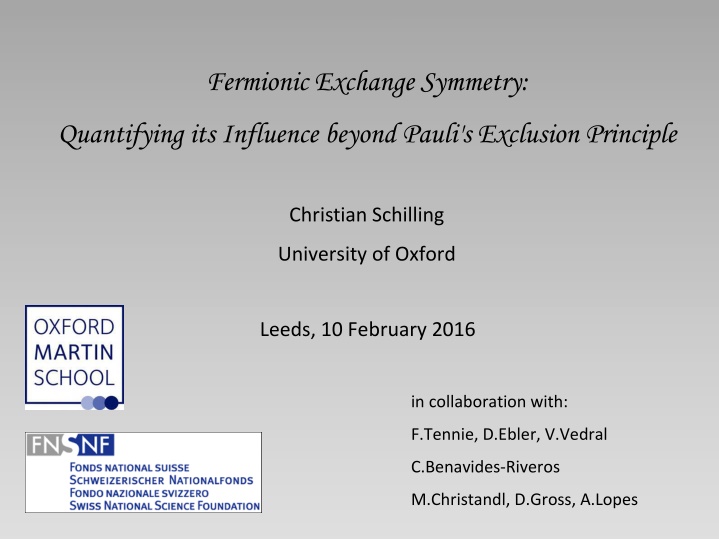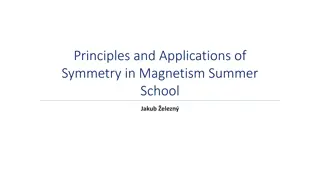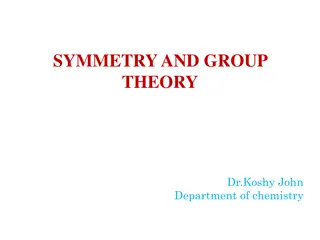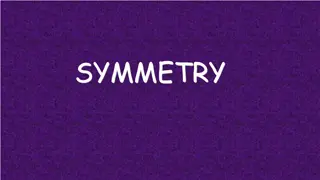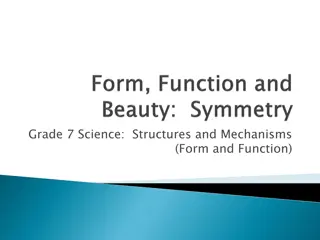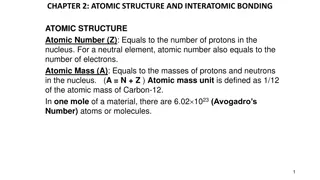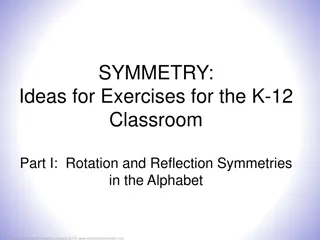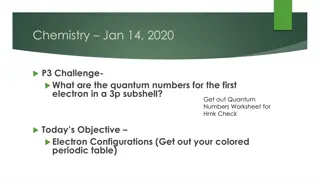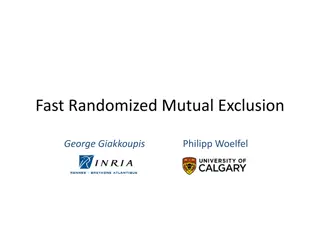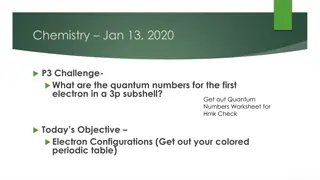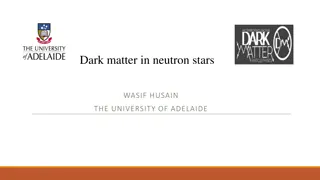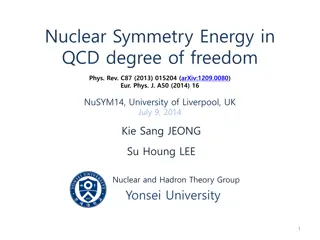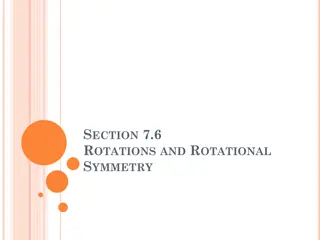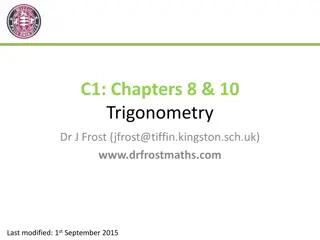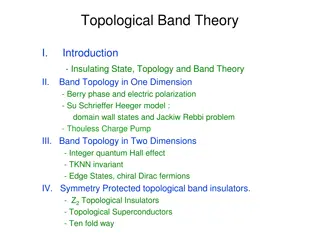Influence of Fermionic Exchange Symmetry Beyond Pauli's Exclusion Principle
Christian Schilling from the University of Oxford delves into quantifying the impact of fermionic exchange symmetry, going beyond Pauli's exclusion principle. The study explores generalized Pauli constraints, concrete systems analysis, and the relevance of (quasi) pinning. Collaborating with various researchers, the research highlights the implications on quantum states of identical fermions, emphasizing the importance of occupation numbers and further constraints.
Download Presentation

Please find below an Image/Link to download the presentation.
The content on the website is provided AS IS for your information and personal use only. It may not be sold, licensed, or shared on other websites without obtaining consent from the author.If you encounter any issues during the download, it is possible that the publisher has removed the file from their server.
You are allowed to download the files provided on this website for personal or commercial use, subject to the condition that they are used lawfully. All files are the property of their respective owners.
The content on the website is provided AS IS for your information and personal use only. It may not be sold, licensed, or shared on other websites without obtaining consent from the author.
E N D
Presentation Transcript
Fermionic Exchange Symmetry: Quantifying its Influence beyond Pauli's Exclusion Principle Christian Schilling University of Oxford Leeds, 10 February 2016 in collaboration with: F.Tennie, D.Ebler, V.Vedral C.Benavides-Riveros M.Christandl, D.Gross, A.Lopes
Paulis exclusion principle (1925): `no two identical fermions in the same quantum state modern version: (quasi-) pinned by (quasi-) pinned by relevant when Aufbau principle for atoms
strengthened by Dirac & Heisenberg in (1926): `quantum states of identical fermions are antisymmetric implications for occupation numbers ? further constraints beyond
Outline 1) Generalized Pauli constraints 2) Study of concrete systems 3) Relevance of (quasi)pinning 4) Projects
1) Generalized Pauli constraints N-fermion states partial trace 1-particle reduced density operator natural occupation numbers
polytope 1 1 0 [A.Klyachko, J.Phys 36, p72-86, 2006] [M.Altunbulak,A.Klyachko, CMP 282, 2008] Pauli exclusion principle
polytope = intersection of finitely many half spaces facet: half space:
example: N = 3 & d= 6 [Borland&Dennis, J.Phys. B, 5,1, 1972] [Ruskai, Phys. Rev. A, 40,45, 2007]
2) Study of concrete systems Position of relevant states (e.g. ground state) ? or here ? (pinning) 1 here ? 1 0
Harmonium restrict to trick for weak couplings: duality [CS, R.Schilling, J. Phys. A, 47, 415305 (2014)]
tremendous effort N = 3
pinning analysis too difficult/ not known yet instead: check w.r.t `concept of truncation [CS, PhD thesis, ETH Zurich, 2014]
relevant as long as lower bound on pinning order
relevant as long as quasipinning Phys. Rev. Lett. 110, 040404 (2013)
How about intermediate couplings? more particles? higher spatial dimensions? After all, how nontrivial are these findings?: ??? 1 [F.Tennie, V.Vedral, CS, arXiv:1509.00358] 1 0
intermediate couplings: more particles: nontriviality:
higher spatial dimensions & crossovers: many further plots [F.Tennie, D.Ebler, V.Vedral, CS, soon on the arXiv]
Hubbard model e.g. 3 electrons on 3 sites: excited state ground state pinning requires symmetries: [CS, Phys. Rev. B 92, 155149 (2015)]
3) Relevance of (quasi)pinning pinning point on boundary : restricted dynamics 1 0 decay impossible generalization of:
structual simplifications for N-fermion state 1 1 0 stable:
example: dimension pinning by structure of pinning of with A.Lopes & D.Gross stable! [CS, Phys. Rev. A 91, 022105 (2015)]
4)Projects Generalized Hartree-Fock method approximate unknown ground state Hartree-Fock much better:
Numerical quality? (+ ) E ex energy (-) E E ex HF E corr E E D E 0 [CS, C.Benavides-Riveros (2016)]
Quantum Chemistry: atoms numerical tools: configuration interaction physical & mathematical HOMO- LUMO- gap intuition for quasipinning mechanism behind it strongly correlated fermions fractional quantum Hall states
Experiments measure (quasi)pinning a) measure occupation numbers 1 b) no-go effects/transparency 1 0 detector physical system [CS, Phys. Rev. B 92, 155149 (2015)]
Conclusions antisymmetry of translated to 1-particle picture generalized Pauli constraints study of N-fermion-model with coupling generalized Pauli constraints nontrivially saturated by quasipinning GPC relevant beyond PEP quasipinning weaker in higher dimensions (quasi)pinning is physically relevant e.g. improve Hartree-Fock fermionic ground states simpler than expected (?)
